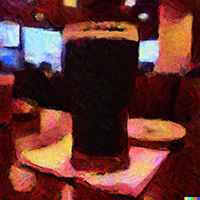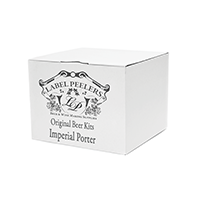The Porter: Not All Dark Beers Are Bitter
Posted by Matteo Lahm on 21st Feb 2023
If you want to explore dark beers but stouts are a bit bitter and too alcoholic for your pallet, try making a porter. Porters are sweeter with a lower ABV. They characteristically have chocolate flavors from the use of roasted malts as opposed to the stout which uses malted barley. With porters, you don’t have to be afraid of the dark.

British brewer Ralph Harwood first brewed the porter in 1722. It was a blend of three different beers and was called “Entire.” The beer style came to be named after the street and river porters of London, who were known for their strength and hard work. The beer was a dark, robust, and full-bodied brew that was popular among, and representative of the working class. The beer style also became popular in In the United States in the late 1800s and early 1900s. It was often served in pubs and taverns, and a favorite of America’s working class as well.
Porter beer is made with a variety of malts, including pale, brown, and black malts. The dark malts give the beer its dark color and chocolate flavors. Hops such as Fuggles, East Kent Goldings, or Northern Brewer are good choices. Though moderate to high in bitterness, these hops will counterbalance the sweetness of the malts nicely. The combination creates a beer that is full-bodied and flavorful.
You can use either lager or ale yeast to ferment a porter. These yeasts will help to create a balanced beer with a smooth texture and a full-bodied flavor. Porter beers brewed with lager yeast will generally have a cleaner, crisper flavor profile than those brewed with ale yeast. Lager yeast ferments at cooler temperatures, resulting in a beer with a more subtle malt character and a dry finish. Ale yeast ferments at warmer temperatures, resulting in a beer with a more complex malt character and a sweeter finish. Lager porters tend to be more balanced and drinkable, while ale porters tend to be more robust and flavorful.
Another notable characteristic of the porter is oak. Porters were the first beers to be aged in oak barrels. Typically, they are aged for 2-6 months. During this time, the beer absorbs the flavors and aromas of the wood, which can include notes of vanilla, caramel, and toasted oak. The beer also develops a smooth, creamy texture and a slightly higher alcohol content.
Without barrel aging, the Porter has a lighter flavor and aroma, and the mouthfeel is not as smooth. This can pose a small challenge for home brewers but there are some easy workarounds you can try. You can make an oak tea. Boil your oak chips, cubes, or spirals for 15 minutes to sanitize and extract flavor. Then you can incrementally add only the liquid to your finished beer prior to bottling. It is important to add it slowly and taste as you go. Oak flavors are easy to add but you cannot get them out. The vanilla and nutty flavors of oak are an excellent complement for the chocolatey profile of the porter.
The Porter is a great choice for those who like dark beers but do not prefer the bitterness and potency of a stout. Whether you are looking for a beer to enjoy on its own or to pair with food, you cannot go wrong with a porter. There are several great porter kits available for you to try and see what you like. Good luck!


